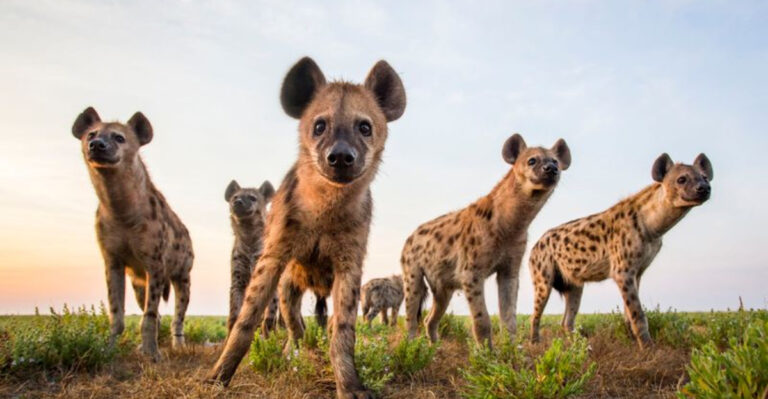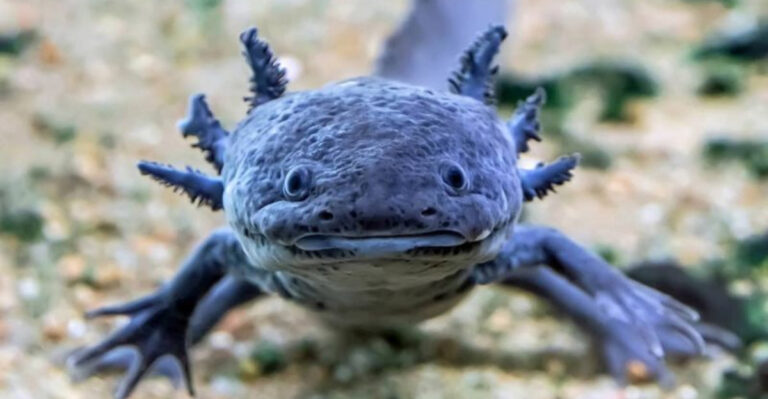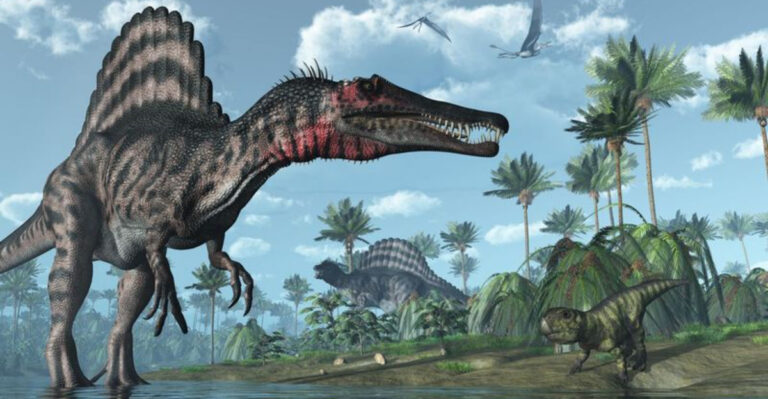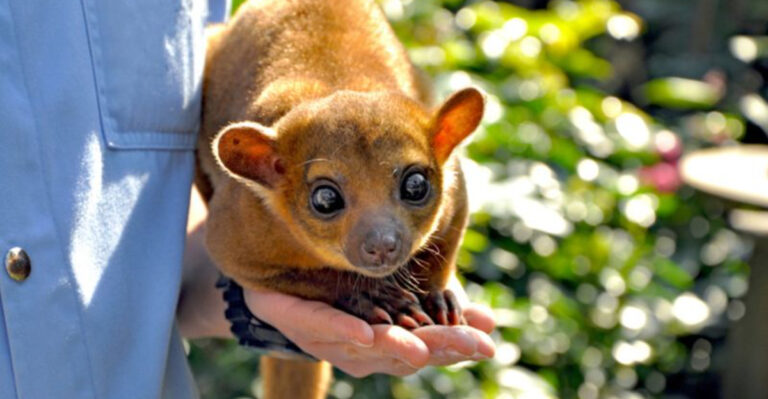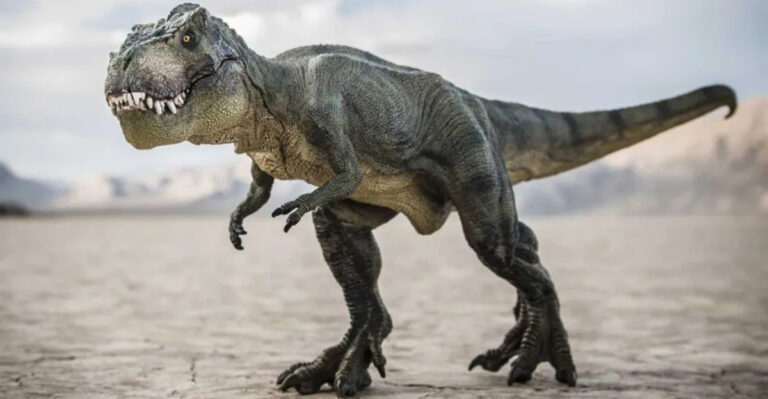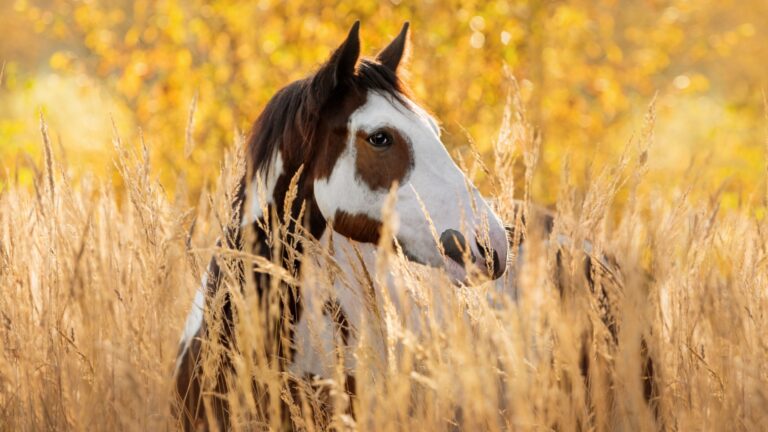Mastering The Dark: 10 Snakes That Hunt Under Cover Of Night
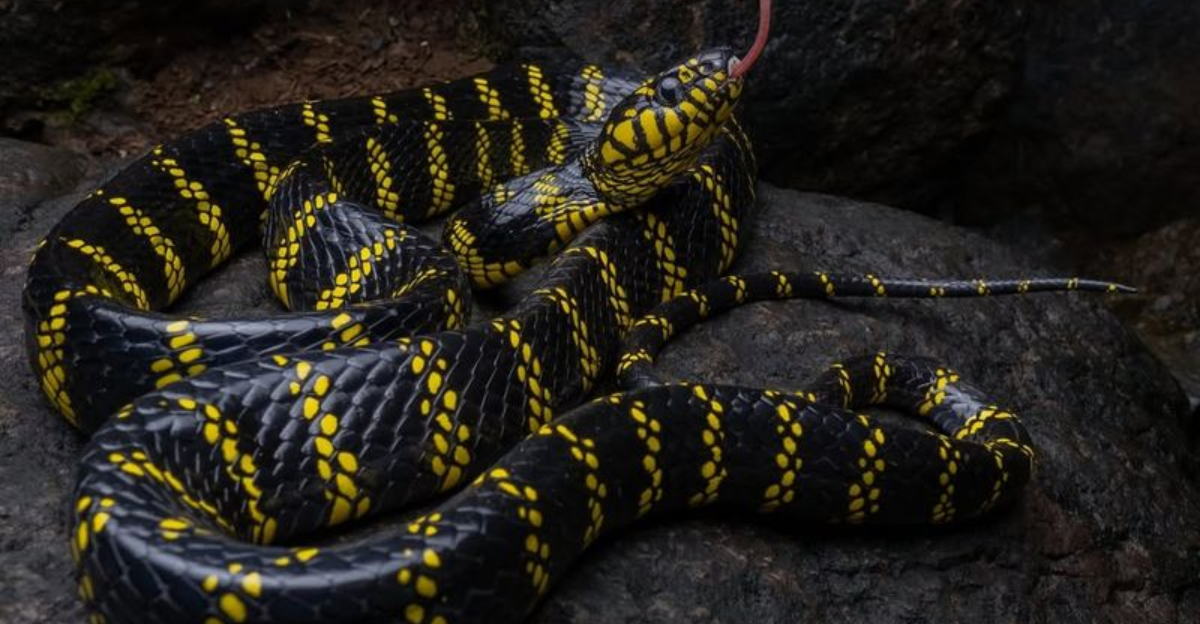
Enter the enigmatic world of nocturnal snakes, where these fascinating creatures have developed unique adaptations to excel in the darkness.
Equipped with specialized traits, they are masters of stealth, perfectly suited to hunt under the cover of night.
Join us in discovering the captivating behaviors, intriguing stories, and incredible abilities of these snakes that dominate the darkness.
1. Black Mamba
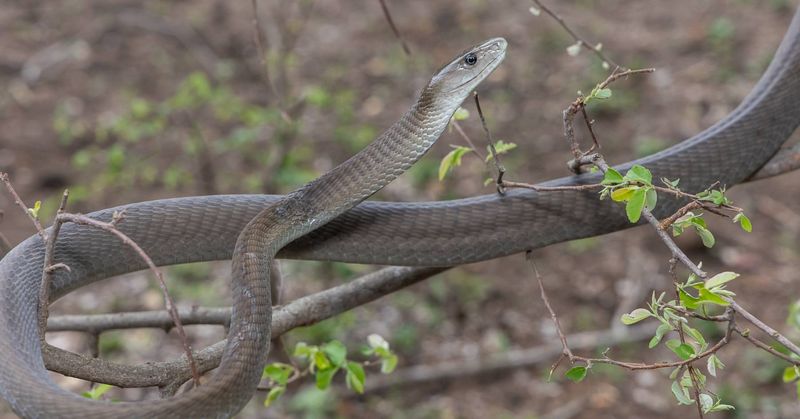
Black mambas are notorious for their speed and agility, making them one of Africa’s most feared snakes. The name comes from the dark black color inside their mouths.
These snakes are nocturnal hunters, using their incredible speed to catch prey in savannas and rocky hills.
Although they have a fearsome reputation, black mambas are generally shy and prefer to avoid confrontation, often fleeing when threatened.
Their ability to remain undetected makes them both elusive and terrifying in the wild.
2. Reticulated Python
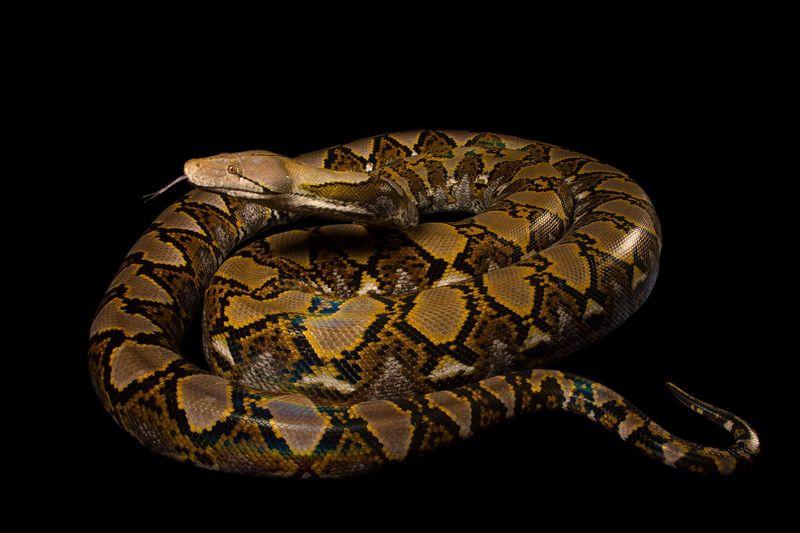
Found throughout Southeast Asia, reticulated pythons are the longest snakes in the world, commanding awe with their size.
As nocturnal hunters, they use their immense strength to capture and constrict large prey, including mammals and birds.
Known for their adaptability, these pythons blend seamlessly into their environment, making them difficult to spot.
Despite their intimidating presence, they are often elusive, adding to their mystique. Watching these giants in the wild offers a truly breathtaking glimpse of nature’s grandeur.
3. Hognose Snake
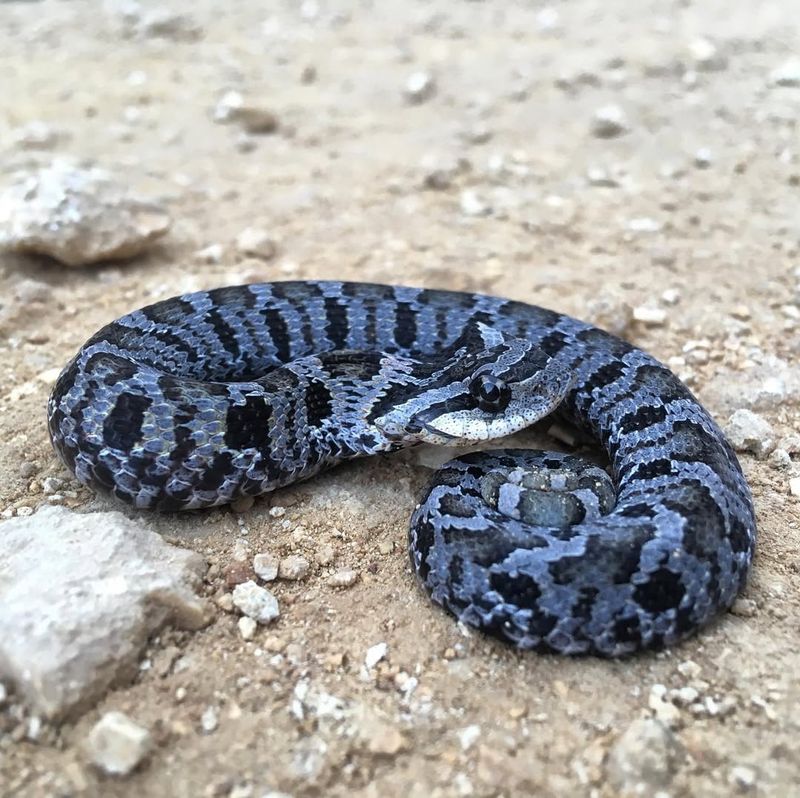
The Hognose Snake is a fascinating nocturnal hunter, best known for its peculiar upturned snout and dramatic defensive displays.
Found in sandy environments, this snake uses its shovel-like snout to burrow and hunt for toads and other small creatures.
As dusk descends, the Hognose Snake emerges to explore its desert habitat under the cover of darkness. Its unique snout isn’t just for show; it allows the snake to unearth prey hidden beneath the sand.
Despite its fearsome appearance when threatened, it is harmless to humans, making it a curious yet non-threatening night prowler.
4. Corn Snake
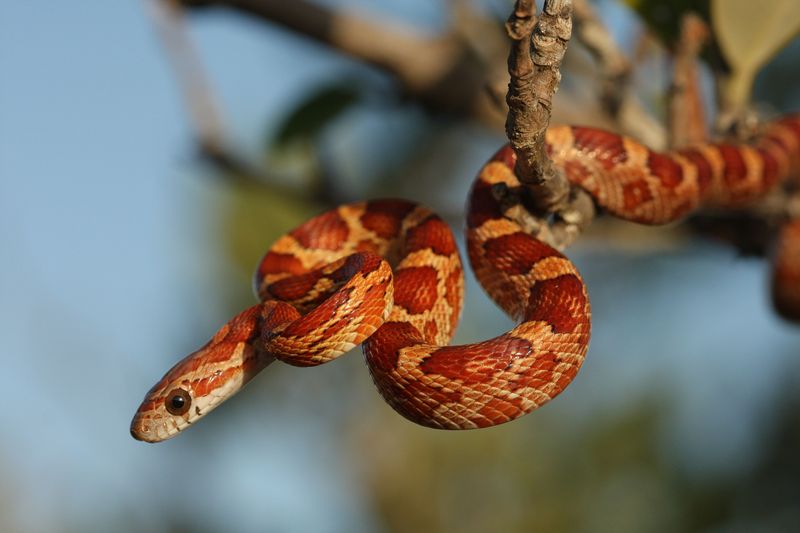
The corn snake, commonly found in North America, is recognized for its vibrant orange skin and striking patterns. As non-venomous snakes, they are favored by pet enthusiasts.
Nocturnal hunters, corn snakes use their sharp sense of smell to track small rodents during the night. They are also skilled climbers, often seen scaling trees in search of prey.
Their adaptability to different environments makes them an intriguing species to study in the wild.
5. Timber Rattlesnake
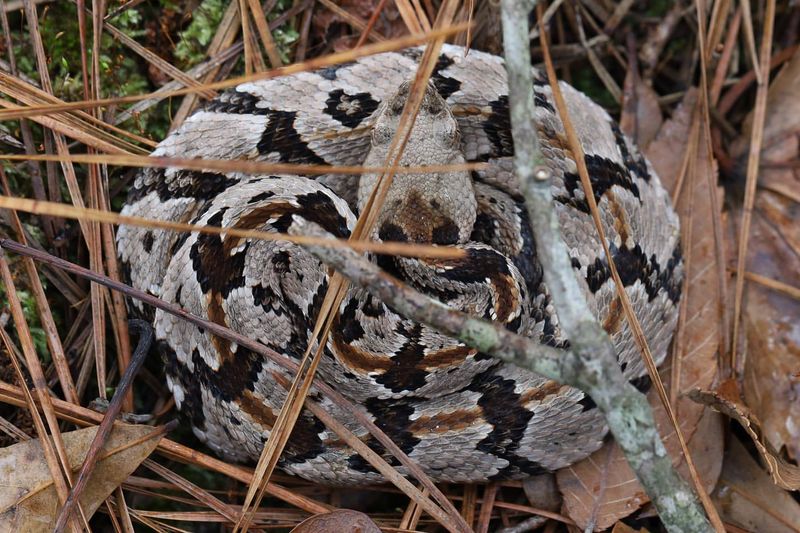
Native to the eastern United States, timber rattlesnakes are proficient nocturnal hunters, easily recognized by their distinctive rattle, which serves as a warning to threats.
They use their heat-sensing abilities to detect prey, striking with accuracy in the darkness. Their venom is powerful, immobilizing prey swiftly.
Preferring secluded spots, they bask in the sun during the day and remain elusive, often heard before spotted, which adds to their mysterious allure.
6. Boa Constrictor
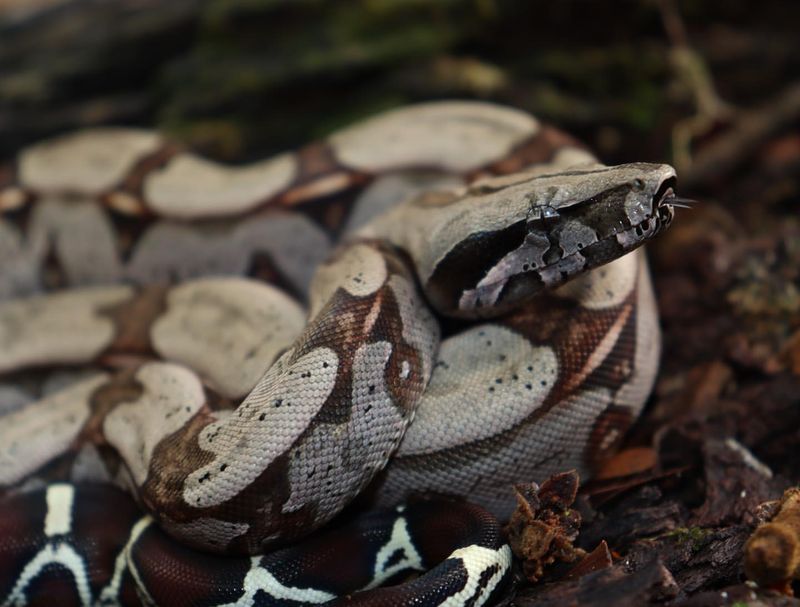
Boa constrictors, native to Central and South America, are powerful predators skilled in subduing prey through constriction.
Preferring the cover of darkness, they use heat-sensing pits to locate warm-blooded animals, hunting with calculated precision.
Solitary by nature, boas are typically inactive during the day. Their immense size and strength allow them to dominate their environment, taking down prey much larger than themselves.
7. King Cobra
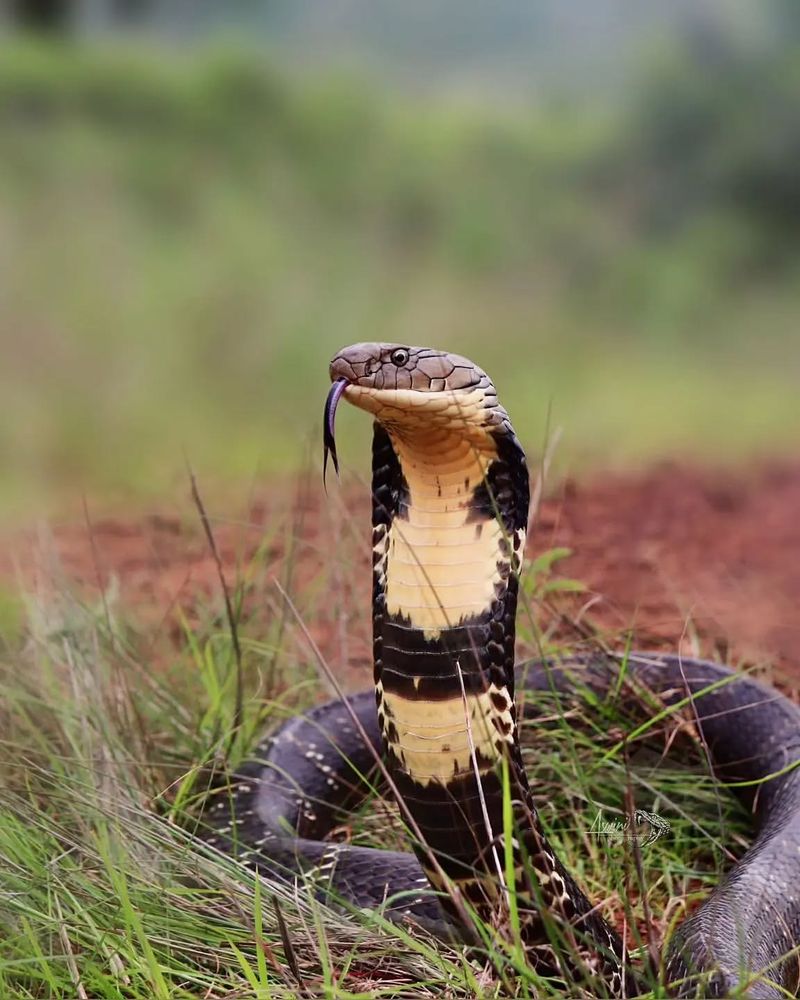
The king cobra, the longest venomous snake in the world, commands both fear and respect with its size and potent venom.
Native to Southeast Asia, these nocturnal snakes are stealthy hunters, typically stalking other snakes as their primary prey. Despite their intimidating reputation, king cobras are shy and usually avoid human contact.
Their presence in an area is often a sign of a balanced ecosystem, as they help control the population of other snakes.
8. Banded Krait
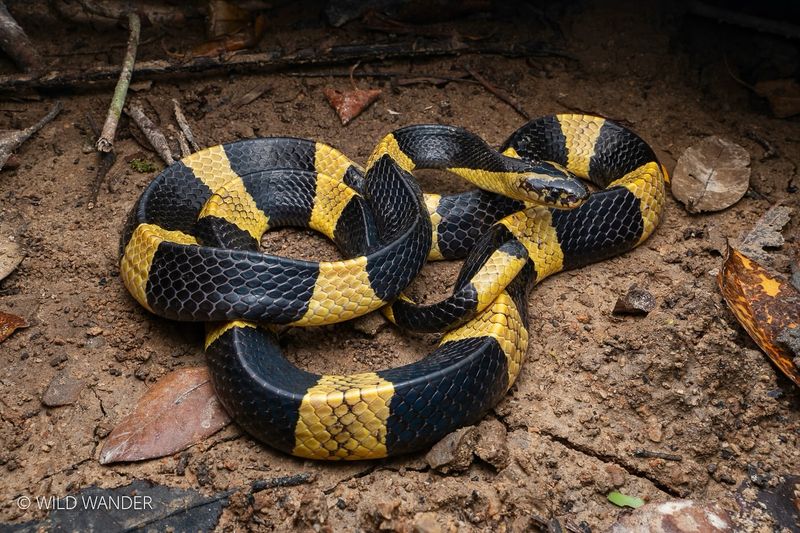
Native to South and Southeast Asia, banded kraits are easily identified by their vivid black and yellow bands. These venomous snakes are nocturnal, hunting primarily at night for other snakes.
Their specialized diet allows them to use their potent venom to subdue prey with stealth and accuracy.
During the day, they are reclusive, often hiding in burrows or under debris. Their striking appearance and unique behaviors make them a captivating subject for researchers.
9. Mangrove Snake
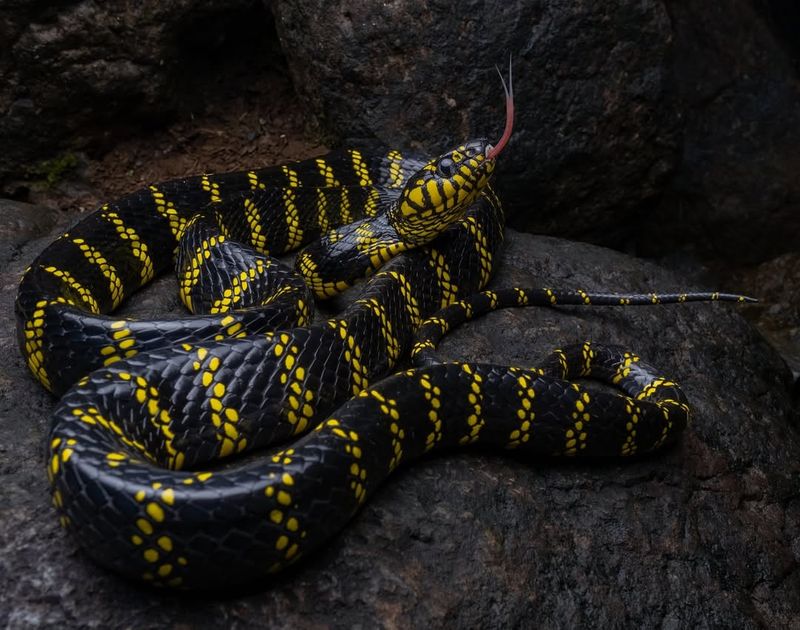
The Mangrove Snake is a secretive serpent that thrives in the shadows of swampy mangrove forests.
With glossy black scales punctuated by bright yellow bands, it’s a visual spectacle under the moonlight. This snake uses its excellent climbing skills to navigate the trees, hunting small mammals and birds with precision.
Its nocturnal lifestyle is perfectly suited to its environment, allowing it to ambush prey with stealth. While its bite contains mild venom, it primarily relies on surprise and speed to catch its meals.
10. Ball Python
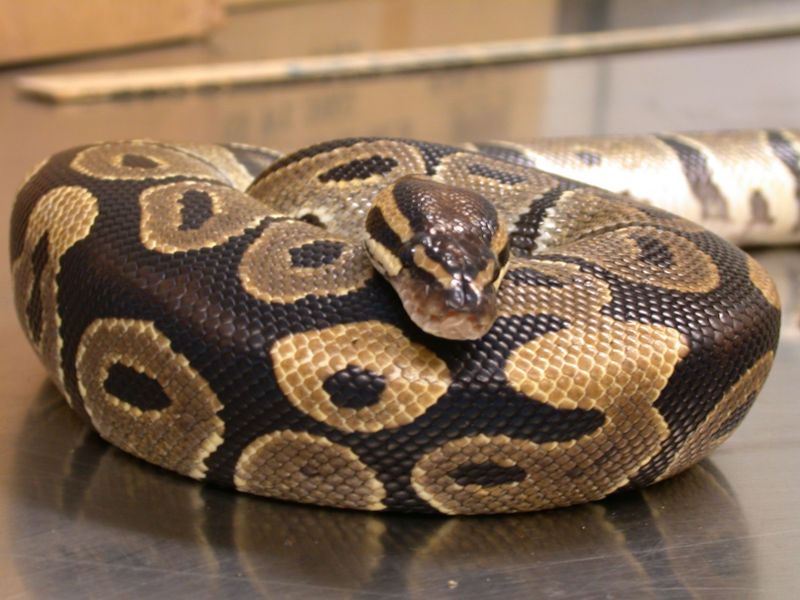
Native to Africa, ball pythons are favored as pets because of their calm demeanor and moderate size.
In the wild, they are nocturnal hunters, emerging when temperatures cool down. As ambush predators, they lie in wait for small mammals and birds to pass by.
When threatened, ball pythons curl into a tight ball, showcasing a unique defense behavior. Their fascinating patterns and behaviors make them a captivating species for observation and study.

